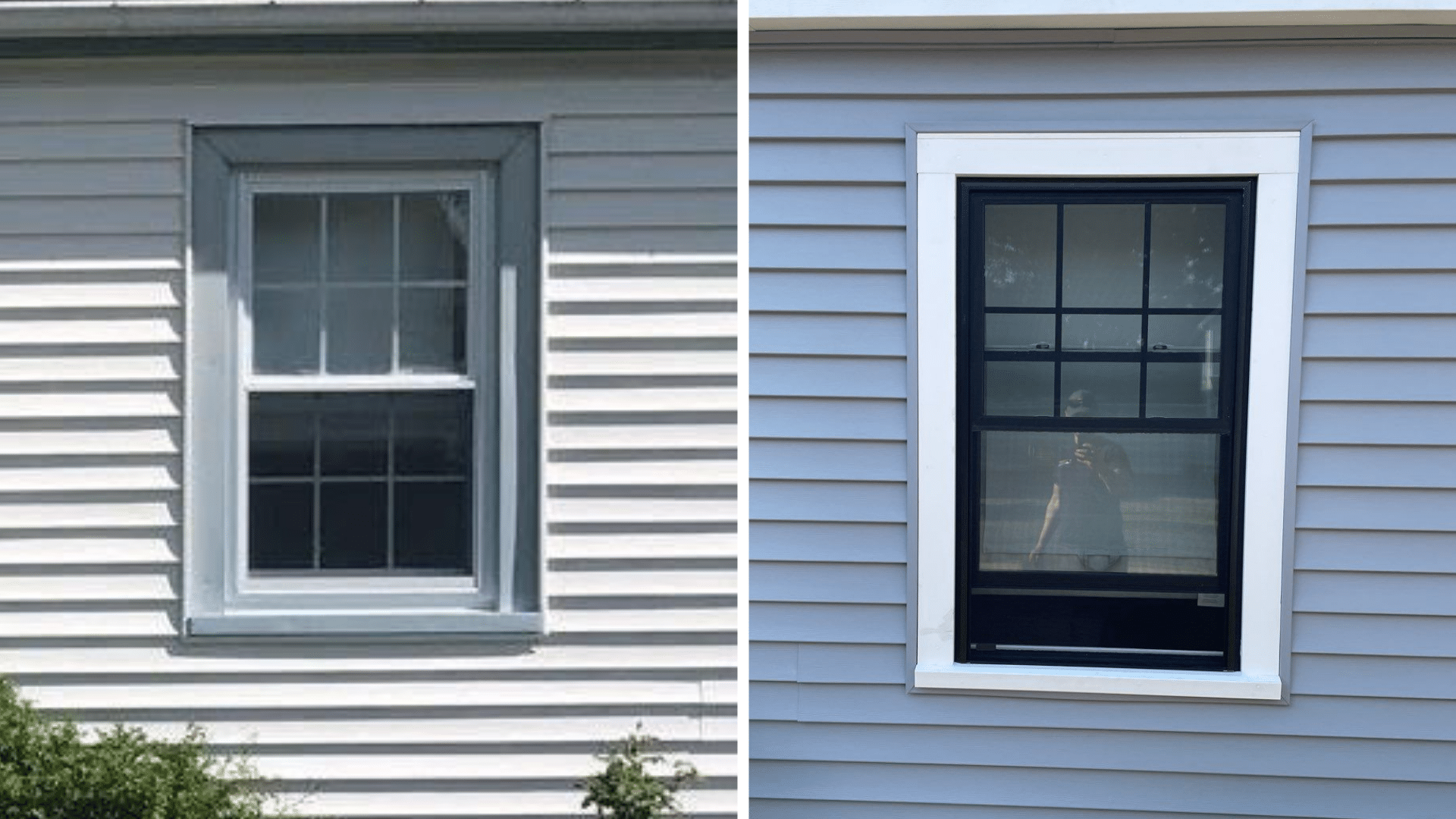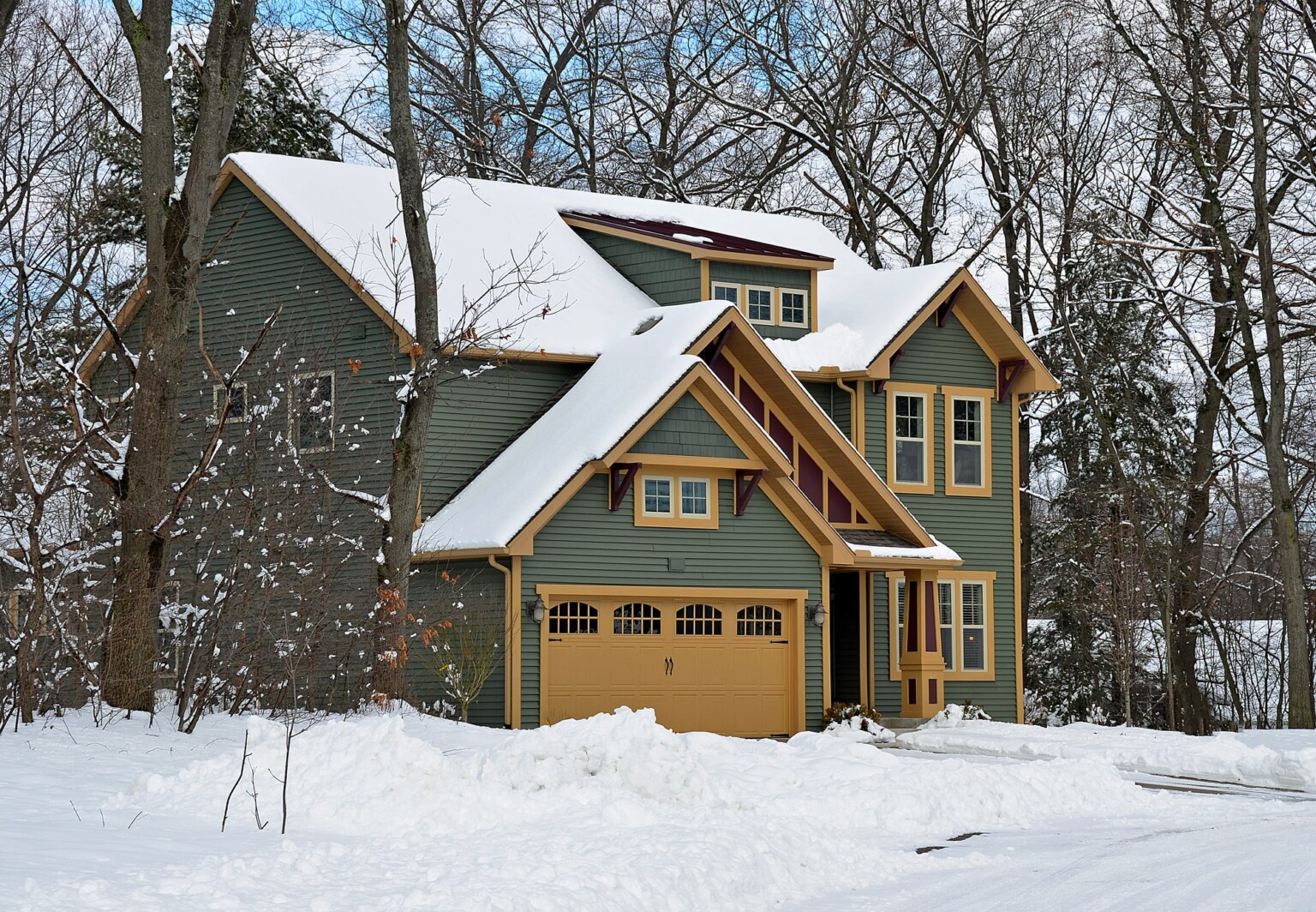Winter Home Checklist 2024 Guide: Roofing, Windows, and Vinyl Siding
What makes a New England home winter-ready? A well-insulated, energy efficient home makes all the difference during those bone-chilling winter nights. Your roofing, siding, windows, and doors stand guard against winter’s wrath with the most energy efficient technologies and durable materials. When you are ready to make your home cozy for the winter season, this winter proof house checklist has everything that you need to winterize your home.
Farmers’ Almanac 2024: What to Expect this Winter Season
Not sure if it’s necessary to winterize your home? The Farmers’ Almanac 2024 prediction of New England’s winter might convince you otherwise.
“Brace yourself for a Wet Winter Whirlwind! Farmers’ Almanac winter weather forecast calls for a season of rapid-fire storms that will bring both rain and snow, with little downtime in between,” writes the publication.
Farmers Almanac weather is forecasting a “wet and white” winter in New England and across the Northeast with “above-normal amounts of winter precipitation” and “near-to above-normal temperatures.”
Winter Proof Windows Checklist
Does your home need new windows? To winterize your home, a great place to start is with your windows. Replacing your windows can help save you over $500 per year on your energy bills, according to the Department of Energy. This type of performance upgrade goes beyond what you can experience from insulating curtains!
Don’t forget that drafty windows account for up to 30% of your home’s energy loss.
Winterize your home with this winter-ready windows checklist:
- Energy-efficient gasses argon and krypton insulate the windows, preventing heat loss
- Foam-filled vinyl frames to further prevent heat from escaping
- Low-e application which allows the sunlight to naturally heat your home in the winter
- Low air infiltration ratings, ensuring that the window creates an airtight seal.
- Professional installation for top performance benefits.
- Insulated weight pockets (most window contractors don’t do this)
- Double or triple-paned glass containing an argon or krypton gas
- Triple weather-stripping seals for top-efficiency performance
- Click to read about the new Energy Star 7.0 requirements as of October 2023
Why are your windows losing energy?
- Low quality: Windows that are crafted from inferior products will not properly insulate your home. This can include elements ranging from the glass package to the foam insulation (or lack thereof).
- Age: The best quality windows are designed to last for life. However, lower quality products may only last between 10-15 years.
- Incorrect Installation: Poor quality installation can result in air infiltration, drafty windows, and high energy bills. If you’re experiencing unwanted drafts and high energy bills in your home, the good news is that you don’t have to fight an endless battle with your thermostat.
A word on foggy windows in the winter
Window condensation is moisture that forms on glass window panes. In some circumstances, condensation is perfectly normal. It forms when warm air comes in contact with a cool pane of glass, much like a glass of lemonade on a hot summer day.
From there, moisture forms on the glass. Condensation that wipes away is not a cause for concern. It will go away on its own or when you wipe it away with your hand.The troubling part about condensation is when it forms inside the glass. If the condensation does not wipe away, it’s a sign of seal failure. This means that your windows are no longer performing properly and need to be replaced.
Up on the House Top: Winter Proof Roofing for New England Homeowners
Is it time to get your roof ready for winter? Curling, missing and buckled shingles are only several signs that you need a new roof. Below, you’ll find 10 additional signs that a new roof replacement is necessary.
Roof winter-ready checklist
- Properly ventilated roof with gable vents, soffit vents, and ridge vents
- No presence of mold, mildew, or condensation in the attic
- The attic temperature is close to the outdoor temperature
- Your walls and ceilings have no discoloration or staining
- No standing water on the roof
- No obvious roof damage
- Shingles are in-tact without bucking or curling
- No problems from ice dams during previous winters
Additional steps for winter-proof roofing
- Ensure the flashing around vents, chimneys, and skylights is secure and free of gaps to prevent leaks.
- Examine chimney seals for cracks or wear that could allow water or cold air to seep in. Keeping your chimney properly sealed contributes to a more durable and winter proof roofing system.
- Clear your roof of leaves, twigs, and other debris that can trap moisture and cause damage.
Do you have a leaky roof?
A roof leak can do detrimental damage to the structure of your home. When your roof is leaking in the winter, you can also anticipate that energy is being lost as well. But what are the signs of a leaking roof?
Signs of a leaky roof in the winter include:
- Soggy areas: Roof leaks can be quite damaging, so they may leave behind soggy areas on the roof deck and even inside the attic.
- Foul odor: When water penetrates your roof, it can create an unpleasant musty smell.
- Standing water on your roof: Water that doesn’t run off your roof ends up pooling on the shingles.
- Discoloration and staining: If water is leaking into your home, it can stain the ceiling and walls.
- Swelling and buckling: When water is penetrating into your roof decking, your roof might swell and buckle.
- Obvious roof damage: If the roof is visibly damaged, such as cracked shingles, a leak is a likely culprit.
Is your home at-risk for ice dams?
One of the realities of winter in New England is ice dams. Ice dams can also be incredibly damaging to your roof. Ensuring that the roof is properly ventilated is key to ice dam prevention, and here is what you need:
- Gable vents, which are typically installed where two slopes of your roof form a triangle
- Soffit vents, which run along your soffit and protect against wind-driven rain from entering the attic
- Ridge vent, which guards against roof rot as well as ice damming
Ensure you get the ventilation you need with GAF roof installation. As Master Elite certified roofing contractors, our roof replacement can help balance indoor temperature while protecting you from ice dams, leaks, and more. Call us for winter roof installation services.
Don’t forget to clean your gutters
Clogged gutters can lead to ice dams, roof leaks, and water damage during winter. Cleaning your gutters allows for proper drainage and protects both your roof and foundation. Be sure to remove debris like leaves and twigs and consider installing gutter guards for added protection.
Prevent Energy Loss with Energy Efficient Siding
A home’s energy efficiency can be improved with insulated siding by reducing thermal bridging. The studs of your home allow heat to pass through them and represent up to 25% of the wall surface in the average house. Imagine an entire wall without any insulation!
About 35% of heat loss occurs through walls. By reducing thermal bridging, insulated siding acts as a blanket of continuous insulation that keeps homes cool in summer and warm in winter, enhancing energy efficiency. As vinyl siding contractors, we are certified installers with the Vinyl Siding Institute. Count on us for quality craftsmanship that’s second-to-none.
Winter-ready siding checklist
- Siding is free from cracks, holes, or wood rot
- No chipping and pealing
- The siding is flush to the exterior and not warped
- Insulated siding panels and housewrap are present
Does Your Siding Properly Insulate Your Home?
Foam-backed siding is one of the best ways to insulate your home. This is because it reduces heat transfer down to the wood studs.
Adding vinyl siding to your home further seals its thermal envelope. Insulated siding is like wrapping your home in warmth. Our vinyl siding offers more insulating power than fiber cement, wood, engineered wood, or brick siding.
In addition to insulation, your siding replacement project also needs house wrap, which is a moisture-proof barrier that prevents energy loss and rot. Did we mention that it’s also possible to install siding in the winter?
Winterize Home: Keep Your Home Cozy with Interior Maintenance
Preparing your home for winter isn’t just about the exterior—your interior plays a crucial role in keeping your family safe, warm, and comfortable during the colder months. Here are some essential tasks to ensure your home is winter-ready from the inside out:
Inspect and Maintain Your Heating System
- Schedule a professional HVAC tune-up to ensure your furnace or heating system is operating efficiently.
- Replace air filters to improve airflow and maintain healthy indoor air quality.
- Check thermostat settings and consider upgrading to a programmable or smart thermostat for better energy efficiency.
Test Smoke and Carbon Monoxide Detectors
- Winter brings increased use of heating systems and fireplaces, so it’s vital to test your smoke and carbon monoxide detectors.
- Replace batteries and ensure alarms are functioning properly to keep your household safe.
- Install detectors on every floor of your home, especially near sleeping areas.
Seal Interior Drafts and Gaps
- Check for drafts around windows, doors, and baseboards, and seal gaps with caulk or weatherstripping.
- Use draft stoppers at the base of doors to prevent cold air from entering.
- Consider heavy thermal curtains for added insulation and to reduce energy loss.
Monitor Humidity Levels
- Use a humidifier to maintain an ideal indoor humidity level of 30-50%, preventing overly dry air that can irritate skin and respiratory systems.
- Check for excess moisture in areas like basements or bathrooms, which can lead to mold growth.
Prepare Your Fireplace and Chimney
- Have your chimney professionally inspected and cleaned to remove soot and creosote buildup.
- Ensure the damper closes tightly when not in use to prevent heat loss.
- Stock up on firewood if you use a wood-burning fireplace, and store it in a dry, easily accessible location.
Check and Upgrade Your Insulation
- Inspect your attic, walls, and crawlspaces for adequate insulation levels. Insufficient insulation can lead to significant heat loss, making it harder to keep your home warm.
- Consider adding blown-in or foam insulation to key areas like the attic, where heat tends to escape most.
- Seal gaps and cracks around windows, doors, and outlets to complement your insulation and create a tight thermal envelope.
- Install new energy efficient exterior products, which provide insulating capabilities. For example, our foam-back vinyl siding offers an R-value that’s 19% higher than standard EPS foam siding, maximizing heat conservation while insulating your home down to the wood studs.




